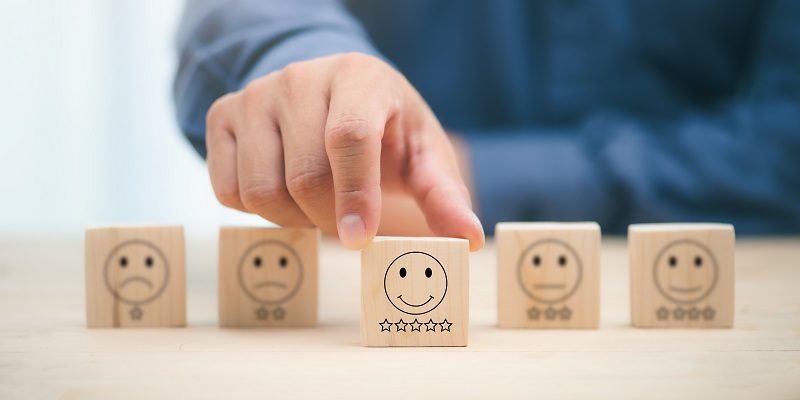In today’s competitive business environment, retaining customers is crucial for success. Not only is it more cost-effective to retain existing customers than to acquire new ones, but loyal customers also provide valuable word-of-mouth referrals and repeat business. In the B2B sector, keeping customers satisfied and loyal requires a strategic approach that focuses on every stage of their journey, from pre-sales to post-purchase. In this article, we will discuss the key factors that impact customer retention in B2B businesses and provide tips on how to maximize customer loyalty.
The Importance of the Delivery and Adoption Phases
Many B2B businesses make the mistake of assuming that customer retention efforts end once a sale is made. In reality, the delivery and adoption phases are critical for improving retention. Customers are more likely to be won or lost during these stages, as they begin to use the product or service and evaluate its value. Therefore, it is crucial to ensure that the delivery process is smooth, and customers are onboarded effectively. This includes providing clear instructions, training materials, and support resources to help users make the most of the product or service. By focusing on these phases, B2B businesses can create a positive customer experience that leads to long-term loyalty.
Understanding customer expectations
To provide a great customer experience, B2B businesses must first understand their customers’ expectations. This includes understanding the needs and pain points of different stakeholders, such as end-users, decision-makers, and influencers. By listening to customer feedback and engaging in regular communication, B2B businesses can gain valuable insights into what is working well and what needs improvement. From there, it is essential to take action to meet customer expectations, whether that involves tweaking product features, improving customer support, or offering personalized training sessions. By showing customers that their needs and opinions are valued, B2B businesses can build strong, lasting relationships that foster loyalty.
The Value of Providing a Great Pre-Purchase Experience
Providing a great customer experience must begin long before a purchase is made. Prospective customers want to feel confident about their decision, and a positive pre-sales experience can help establish trust and credibility. This includes providing clear and detailed information about the product or service, offering demos or trials, and having knowledgeable salespeople who can answer questions and provide guidance. By taking a consultative approach and showing empathy for the customer’s business needs, B2B businesses can create a positive impression that carries over into the post-purchase experience.
The Crucial Post-Purchase Experience
The experience that occurs once a prospect becomes a customer is crucial to building loyalty. Many B2B customers have shared how their purchase experience turned sour due to a poorly executed service and support strategy, which impacted adoption. To mitigate this risk, B2B businesses must have a robust post-purchase strategy in place that ensures a smooth transition from sales to implementation. This may involve assigning a dedicated customer success manager, offering 24/7 support, or providing regular check-ins to monitor customer satisfaction. By taking a proactive approach to post-purchase support and demonstrating ongoing value, B2B businesses can create a positive customer experience that builds loyalty.
The Impact of Poor Adoption
A low adoption rate across the organization will lead to your customers looking for an alternative over time. B2B businesses need to have an adoption strategy that prepares customers to utilize and realize the full value of their solution investment. To improve, the steps taken should include providing onboarding training, having protocols in place to spot usage shortcomings and gaps, personalized communication, and targeted campaigns to spur users to be active. Not only does this improve customer satisfaction, but it also maximizes the chances that your customer will renew their subscription.
Timing of Upselling and Cross-Selling
Upselling and cross-selling can be effective ways to increase revenue and maximize customer lifetime value (CLV). However, if done too early in the customer journey, they can reinforce a bad experience. B2B businesses must wait until after adoption has occurred and the client is learning how to grow with the current solution before attempting to sell additional products or services. By earning the right to expand the relationship, businesses are more likely to receive a positive response.
Activating Customers through Delivery and Adoption
If you want to win the opportunity to expand your customer relationship and maximize CLV, understanding that activation is key. By educating and supporting customers through the delivery and adoption phases, businesses can improve the odds of customers realizing value and becoming repeat buyers. When done correctly, this continues the thread of a sterling experience and further drives customer loyalty, making it more likely that your customer will want to explore your other products and solutions.
Maximizing Customer Lifetime Value
Proper customer retention is crucial to CLV because it maximizes the chances of a long-lasting, productive customer relationship. By focusing on delivering value at every stage, B2B businesses can create loyal customers who are more likely to renew their subscriptions and bring in new business through referrals. CLV is closely linked to growth potential, and by taking steps to maximize it, B2B businesses can future-proof their business against competition.
Retention is key to a successful B2B business, and a comprehensive approach is necessary to achieve it. By focusing on customers’ expectations and delivering value, beginning with the pre-purchase stage and culminating in post-purchase adoption, an activation and retention plan can be developed. Marketing teams would benefit from greater engagement with customer-facing teams and continuous feedback mining to realign activities. Brands must prioritize retention activities, including investment allocation in resources, campaigns, and personnel, to deliver the best customer experience. In short, retaining B2B customers requires engagement from stakeholders across the company – in a continuous, coordinated effort that aims to create a positive customer experience across delivery, adoption, and post-purchase activities.

